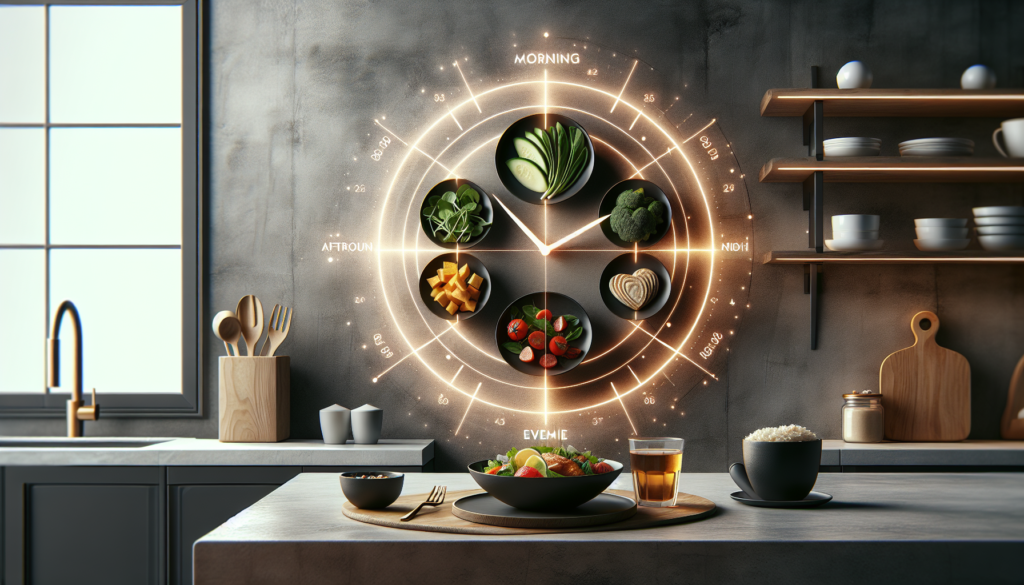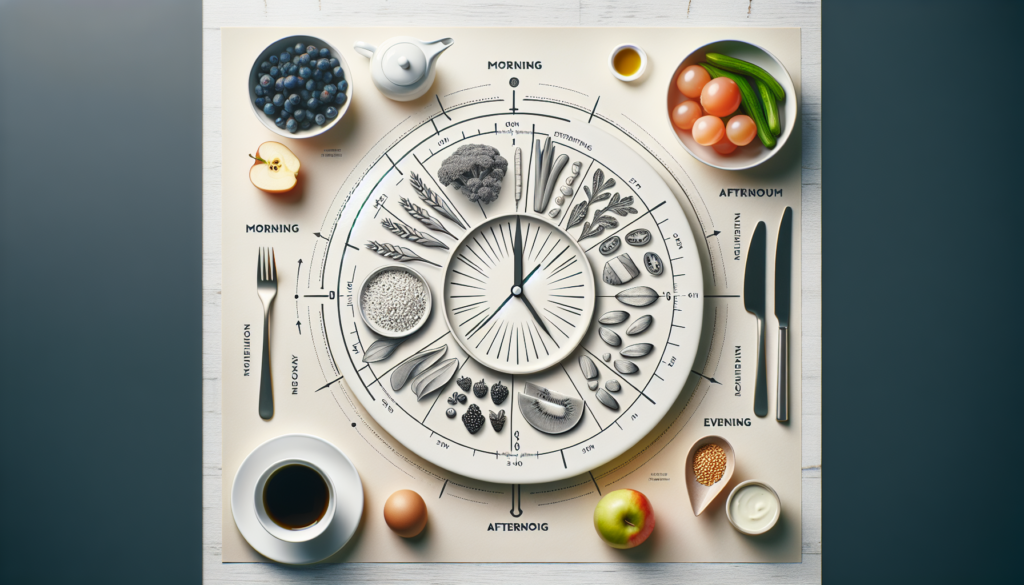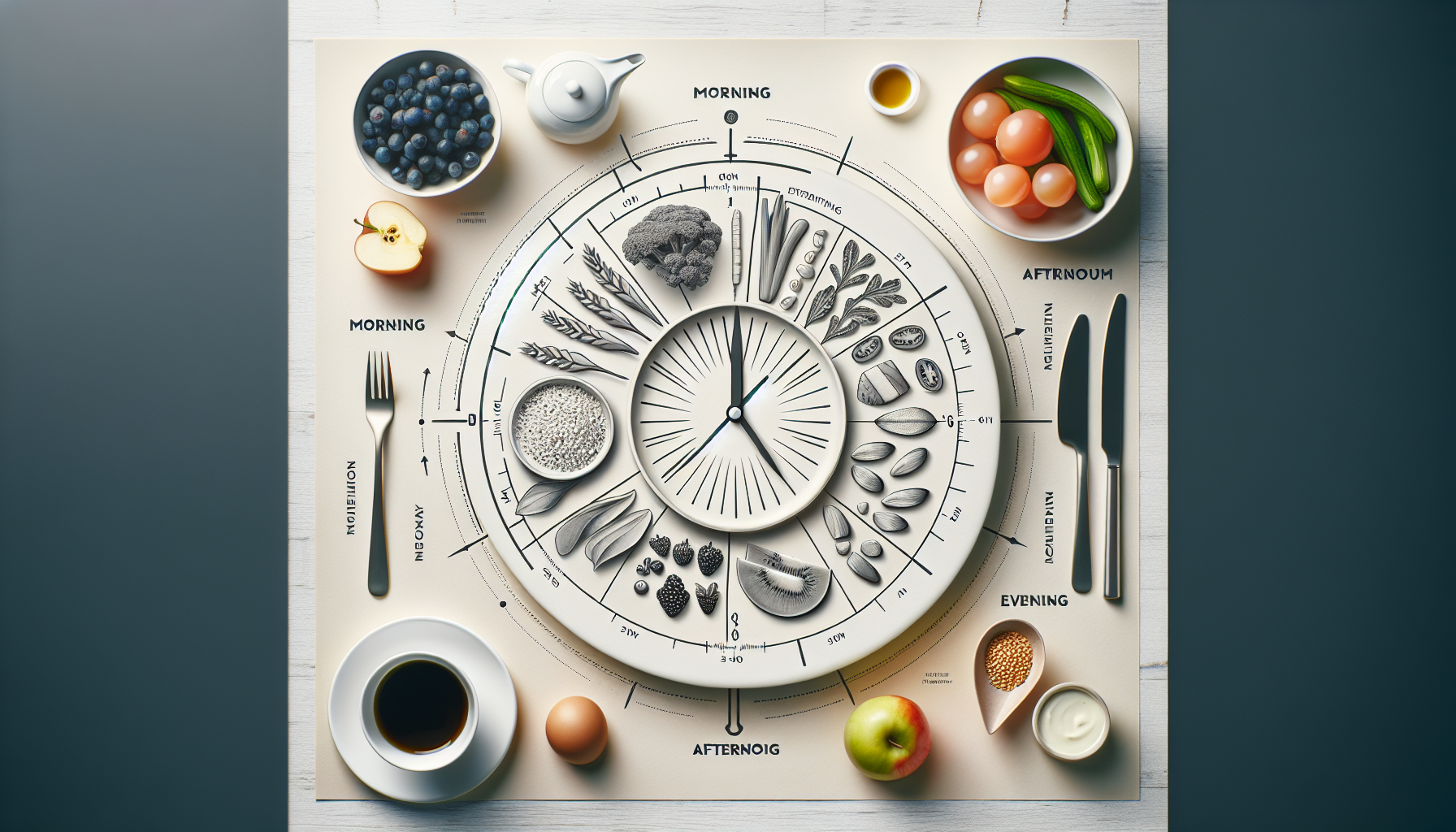Have you ever wondered why sometimes, despite a nine-hour sleep that made you briefly question whether you’re part bear, you still wake up feeling like a zombie who’s been hit by a truck? Meanwhile, other times, you zoom through your day like a caffeinated acrobat? Let’s face it, life without energy is like a party with no cake. Boring, uninviting, and senseless. But what if I told you the secret to harnessing boundless energy isn’t just in what you eat, but when you eat it? Yes, the timing of your meals might just be the secret sauce to transforming you from couch potato to energetic dynamo, or at least reduce the number of unfairly long naps you take.

So, What Is This Meal Timing You Speak Of?
Meal timing, my dear nap enthusiast, refers to the times you choose to eat your meals throughout the day. It’s not just about curbing midnight fridge raids or the infamous 3 PM “I’m gonna pass out at my desk” hunger pangs. It’s about strategically planning when to fuel your body to optimize energy levels, much like trying to navigate through IKEA without a map.
The Science Behind Meal Timing
Now, before you roll your eyes and think, “Is this another science lesson, and do I need my periodic table?” hear me out. Imagine your body is a car. You wouldn’t want to run a car on empty and expect it to perform optimally, right? Meal timing revolves around syncing your body’s natural rhythms and aligning them with your eating schedule. Your body has a circadian rhythm – not Cirque du Soleil – and this rhythm dictates your sleep-wake cycle, but it also affects how your body processes food.
How Does Circadian Rhythm Affect Your Meal Timing?
Think of your circadian rhythm as your personal, invisible, internal clock that decides everything from when you should be asleep to when you might spontaneously feel the urge to yawn during a meeting. This rhythm regulates metabolic processes and hormonal release in your body, including those responsible for digestion and energy management. Eating in tune with these processes ensures that the food you eat powers up your ‘battery’ rather than sending you into a carbohydrate-laden coma.
The Importance of Breakfast: Myth or Reality?
Picture this: You’re late for work, there’s toothpaste on your shirt, your socks don’t match, and it’s a Monday. Skipping breakfast seems like the least of your worries, right? But wait a minute. Breakfast is often touted as the kingpin of meals – “the most important meal of the day,” the long-standing tradition that has breakfast practically wearing a crown.
Breaking Down Breakfast: The Meal That Wakes You Up
Breakfast literally means breaking the fast of the night. You know, the time during which you dreamt of becoming a world-famous juggler till drool interrupted your talent? Eating in the morning breaks this overnight fast and kick-starts your metabolism, waking up your energy circuits.
What Happens If You Skip Breakfast?
Skipping breakfast is like denying a bat its sonar – odd and not quite kosher. Studies indicate that skipping breakfast might result in reduced alertness and increased sluggishness, like waking up on a cozy Sunday only to realize it’s Monday. It could also encourage undesirable eating habits later in the day. Hello, vending machine. Goodbye, self-control.
Optimal Meal Timing Strategy: When To Eat
Knowing when to eat to maximize energy is like finding the cheat code to your body’s game. It could be the reason you leap out of bed or decide that your bed is actually a teleportation device that’s stuck on “stay” mode.
Key Meal Times That Sync With Energy Levels
The golden rule of thumb is to sync meals with periods of high energy expenditure and when your body is better equipped to process nutrients. Let’s break it down in a way that doesn’t require an abacus or quantum physics degree.
Breakfast: Your Rocket Fuel
Consume breakfast within two hours of waking. This isn’t an invitation to party like a hobbit (breakfast, second breakfast, elevenses, and so on) but a call to action for a healthy, balanced meal that can fuel your morning escapades or office escapades.
Lunch: Refuel Mid-Mission
Hold on to your hats – lunch is equally crucial. Think of it as a pit stop for an F1 driver. A well-timed and balanced lunch around midday is vital for maintaining energy levels and preventing the afternoon slump. Picture yourself at that dreaded 3 PM where your enthusiasm is akin to an unplugged vacuum cleaner – that could be remedied by a well-timed meal!
Dinner: Power Down, But Not Lethargy Up
Dinner should ideally be consumed a few hours before sleeping, not five minutes before you practice being a horizontal human. This meal helps recuperate from the day’s activities, but eating too late might leave you tossing and turning like you’re reenacting a scene from “The Exorcist.”
Snacks: The Meal Timing Elixir
When snack cravings roll in like an overeager wave, do not fear them. Learning to manage snack times scientifically can be your secret weapon in the war against flagging energy.
When Snacks Serve Best
Mid-morning and mid-afternoon snack times can help keep energy steady through the day. Rather than inhaling a sugary doughnut that provides the temporary high (and the extended sugar crash), opt for snacks rich in carbs with protein or fat. Think nut butter on whole-grain bread, or hummus with veggies, if you’re into that sort of thing.

Meal Duration and Portion Control: The Balancing Act
Timing is not just about when you eat but also how you eat. Consuming meals too quickly without savoring each delectable bite may lead to overeating. Not to mention, it looks like a scene out of “Jaws.”
The Benefits of Taking Your Time
Research suggests taking at least 20 minutes to enjoy a meal allows your brain to register fullness signals, thereby preventing overeating – like putting the brakes on a culinary joyride before it crashes into a cheesecake mountain.
Tailoring Meal Timing to Your Lifestyle
Life isn’t one-size-fits-all, neither should be your meal timing. While it’s beneficial to align meals with natural body rhythms, personal schedules are important, too. Remember, don’t adhere to advice that would force you to smuggle protein shakes into covert meetings or yoga classes.
Recognizing Your Unique Needs
You might be a night owl, early bird, or afternoon tea-party-goer; whatever your style, flexible meal timing can accommodate. The key is consistency. Unexpected rendezvous with midnight snacks disrupt your rhythm, leaving you in a perpetual energy slump.
The Emotional Connection: Food Isn’t Just Fuel
Much to your stomach’s surprise, you are not a bottomless pit; you have emotions, too. Emotional eating can effectively hijack your timing and energy levels, like inviting a party crasher who insists on playing bagpipes.
Understanding Emotional Eating
Recognizing whether you’re truly hungry or just bored or stressed can redefine your relationship with energy and food. Spoiler alert: That tub of ice cream won’t help grief, unless it’s melted and used as finger paint.
The Future of Meal Timing and Energy Levels
As we become increasingly knowledgeable about bodily rhythms and nutrition’s role in shaping them, meal timing is likely to evolve like your custom playlist—versatile and uniquely yours.
Leveraging Technology for Personalized Meal Plans
The emergence of smartwatches, apps, and data-driven meal plans might soon turn every meal into a precision operation. Think of it like employing a personal chef who moonlights as your life coach.
Science’s Next Steps
Future research might turn all we know on its head, for better or worse. Until science hands us Nutrient Time Travel Tablets, understanding the current relationship between when and what you eat can provide keys to energy kingdom, or at least make Monday mornings less hostile.
In sum, and after profoundly exhausting all meal-related metaphors, it’s crystal clear: Energy levels and meal timing are a match made in culinary heaven. In fact, aligning meal timing with natural rhythms and personal lifestyle can boost not only energy but overall happiness. Bon Appétit to your energized life, may it be as rewarding as finding money in an old pair of jeans!
Isn’t it about time you stopped running like an offbeat fridge and started gliding like a well-oiled Segway?
